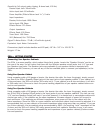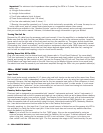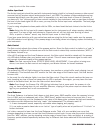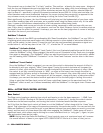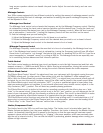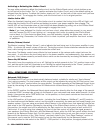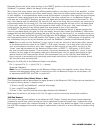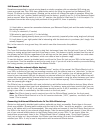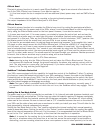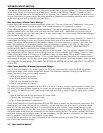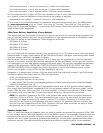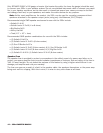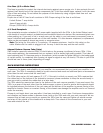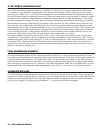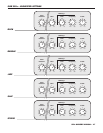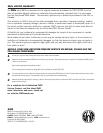
One 8 ohm enclosure + one 8 ohm enclosure = 4 ohms total impedance
One 4 ohm enclosure + one 4 ohm enclosure = 2 ohms total impedance
One 8 ohm enclosure + one 4 ohm enclosure = 2.6 ohms total impedance
Here’s another formula: To figure out the total impedance of two or more cabinets of equal value hooked
up in parallel, divide the impedance of one cabinet by the number of cabinets:
Impedance of one cabinet / number of cabinets = total impedance
(For an even more in-depth discussion of impedance and power rating issues, go to the SWR Website
at: www.swrsound.com, click on “Press,” then click on “Articles,” then click on “Plug and Play –
Setup Tips for Amps and Speakers” – an article by SWR founder Steve Rabe that ran in the August ’92
issue of Bass Player Magazine.)
350x Power Delivery Capabilities (Power Ratings)
After determining how the number of cabinets you wish to run affects the total operating impedance, you
need to take into account the power handling capabilities of your speaker cabinets as compared to what
the 350x can deliver at that impedance. Those ratings are as follows:
450 Watts @ 2 ohms
400 Watts @ 2.6 ohms
350 Watts @ 4 ohms
240 Watts @ 8 ohms
So if you have two 8 ohm speaker cabinets, they will each get up to 175 watts of power, and more during
transient peaks. A single 4 ohm cabinet will get 350 watts of power, and again, more during peaks. Make
sure your speaker cabinet(s) can handle the power.
Also be aware that when running the amp at 2.6 or 2 ohms, you are operating at or near the maximum
capacity of the power amplifier. With extreme settings on the Gain and Master controls and the Limiter cir-
cuit disengaged, you may hear audible clipping of the power amp. If so, you have exceeded the maximum
capacity of the power amp. POWER AMP CLIPPING CAN CAUSE DAMAGE BOTH TO ITSELF AND YOUR
SPEAKER CABINETS. Either re-engage the Limiter (by pushing in on the Effects Blend control) to help
smooth out the peaks, or back off on the Gain and Master controls.
Remember, it’s always better to have a little too much power than just barely enough. If you find yourself
constantly wanting more power than the 350x provides, either:
a) Tell your bandmates to turn down;
b) Tell the monitor engineer to turn you up;
c) (best option) Take the time to investigate getting an external power amp and/or additional speaker
cabinets to supplement your rig.
Question: Can you safely daisy-chain an 8 ohm speaker cabinet and a 4 ohm speaker cabinet together
even though they have different impedances? Yes, but one speaker cabinet will get more power—and be
louder—than the other. Since your 350x is a mono amplifier, it is best to use cabinets of similar imped-
ances when using more than one. The best two-cabinet setup is to use two 8-ohm enclosures.
NOTE: The frequency response of the 350x is far greater than usually found in musical instrument
amplifiers (20 Hz to 40K Hz). This was engineered in order to give the bass player the same punch
and clarity on stage as found in the studio or concert P.A. systems. Therefore, it is doubly impor-
tant that you are aware of the impedance and power rating of the speakers that you intend to use,
and that they are compatible with the 350x. Speakers that have been overdriven are easy to detect
and generally do not fall under a manufacturer’s warranty.
Speaker Output Jacks
Two 1/4" phone jacks and two Speakon Jacks (all wired in parallel) are provided for connection of the 350x
to your speaker system. Whenever possible, use of the Speakon jacks is recommended. Speakon jacks and
connectors offer the best possible connection and are far superior to banana or 1/4" phone jacks in that
they not only lock in place (preventing accidental disconnection), but also offer a greater and more stable
connection surface. This solid connection provides a more effective transfer of power to your speakers.
350x OWNER’S MANUAL • 13



